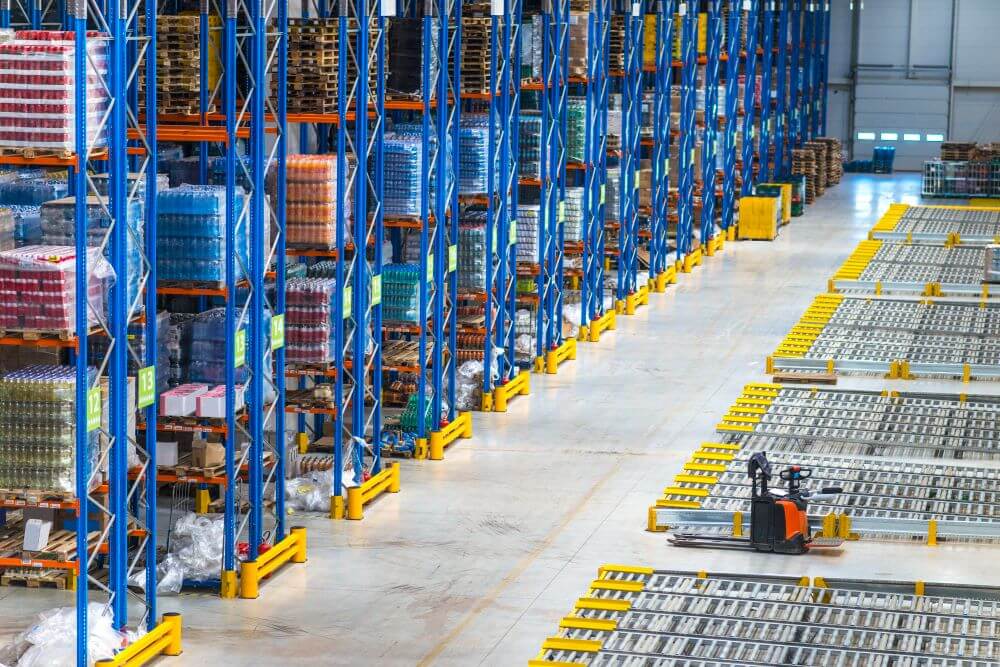The efficiency of your warehouse or storage facility is the backbone of your operation. Smooth, safe, and swift movement of goods from delivery to dispatch defines your productivity and, ultimately, your profitability. Investing in the right combination of high-quality industrial shelving and appropriate handling and lifting equipment is not just an operational upgrade; it’s a strategic business decision that boosts efficiency, enhances safety, and ensures scalability.
In the UK, where warehouse space is at a premium, optimising every square metre is crucial. This guide will walk you through the essentials of industrial shelving and material handling, helping you make informed choices that will serve your business now and in the future.
Understanding Industrial Shelving
Industrial shelving is far more than just a place to put things. It is a structured system designed to store materials in an organised, accessible, and safe manner. It encompasses a wide range of solutions, each tailored to specific needs.
Types of Industrial Shelving
- Heavy-Duty Pallet Racking: The most common system, designed for storing palletised goods. It allows for direct access to each pallet with a forklift truck.
- Cantilever Racking: Ideal for long, bulky, or irregularly shaped items like timber, pipes, or steel bars. It consists of vertical columns with horizontal arms that provide clear, accessible storage without front uprights getting in the way.
- Boltless Shelving: A versatile and easy-to-assemble option for storing smaller, hand-loaded items. Its modular design makes it perfect for stockrooms, workshops, and light industrial applications.
- Mezzanine Shelving: This system effectively doubles your floor space by creating a raised platform or second storey. It’s a powerful way to maximise vertical space for storage, office space, or assembly areas.
- Shelving for Parts & Small Components: Often involves high-density drawers, bins, and louvred panels to organise small but critical inventory items, ensuring they are easy to find and manage.
Key Considerations When Choosing Shelving
Before you invest, you must carefully assess your requirements.
- Load Capacity: What is the maximum weight you need each shelf or rack to hold? Always choose a system with a capacity that comfortably exceeds your heaviest load.
- Material and Finish: Most industrial shelving is made from steel. Finishes like galvanisation or powder coating provide protection against rust, corrosion, and wear, which is essential in demanding environments.
- Dimensions and Adjustability: The system must fit your space and your products. Look for modular, adjustable systems that can adapt as your inventory changes.
- Safety and Access: Ensure your layout provides adequate aisle width for forklift clearance and safe movement. All racking should be properly braced, anchored to the floor, and feature clear load-capacity labelling.
Benefits and Potential Mistakes
The right shelving optimises your space, improves inventory organisation, and reduces the risk of product damage. However, common mistakes can undermine these benefits. Overloading shelves is a serious safety hazard, poor layout planning creates bottlenecks, and failing to account for future growth can lead to expensive reconfigurations down the line.
Handling & Lifting Equipment: The Power Behind the Movement
Your shelving system is only as effective as your ability to move goods to and from it. Handling and lifting equipment is the critical link that makes your storage accessible and your workflow efficient.
Types of Handling & Lifting Equipment
- Hoists, Cranes, and Jib Arms: Used for lifting very heavy loads. Overhead cranes cover large areas, while jib arms offer localised lifting power, often within a specific workstation.
- Pallet Trucks and Stackers: Essential for moving palletised goods around the warehouse floor. Manual and electric versions are available, with stackers providing the additional ability to lift pallets onto low-level racking.
- Lifts and Conveyors: Scissor lifts and goods lifts move items vertically, for example, to a mezzanine level. Conveyor systems automate the horizontal movement of goods, dramatically increasing throughput in picking and packing operations.
- Trolleys and Lifters: Simple yet effective tools for moving smaller boxes, components, or tools. Ergonomic designs reduce physical strain on operators.
Key Selection Criteria
Choosing the right equipment depends on several factors.
- Weight and Reach: What are the maximum loads and heights you need to handle?
- Power Source: Will a manual, electric, or hydraulic system be most efficient for your workload?
- Mobility: Do you need a fixed installation like an overhead crane, or mobile equipment like a pallet stacker?
- Safety Features: Look for essential protections like limit switches, emergency stops, and overload indicators.
- Integration: The equipment must work seamlessly with your shelving. Can a forklift easily access your pallet racking? Is your jib arm positioned correctly to serve a workstation?
The primary benefits are a significant reduction in manual labour, safer loading and unloading processes, and faster overall throughput.
How to Select the Right Combination
The real magic happens when your shelving and handling equipment work in perfect harmony. A holistic approach is essential.
1. Conduct a Needs Audit
Start by analysing your operation. What are your current storage volumes and product types? Note the dimensions and weights of your typical goods. Crucially, consider your growth projections for the next three to five years. Designing for the future now will save you time and money later.
2. Plan Your Layout and Flow
Map the journey of goods through your facility, from arrival to storage, picking, and dispatch. Your layout should support a logical, efficient flow. Plan aisle widths to accommodate your chosen handling equipment, ensuring there is enough room for safe turning and operation. Don’t forget to account for vertical clearance heights.
3. Ensure Compatibility and Integration
Your shelving and handling equipment must be compatible. If you are using an overhead crane, is your racking designed to allow top-down access? Are the clearances between your racking and the reach of your stacker truck correctly calculated? A poorly integrated system creates inefficiency and safety risks.
4. Prioritise Compliance and Safety
All equipment must comply with UK regulations. For lifting gear, this means adhering to LOLER (Lifting Operations and Lifting Equipment Regulations 1998). Your shelving should meet relevant BS EN standards. A schedule for routine inspection and maintenance is not just good practice—it’s a legal requirement.
5. Calculate Cost vs. ROI
The initial capital outlay for a quality system can seem high. However, you must weigh this against the long-term return on investment. Consider the savings from reduced labour costs, fewer accidents, less product damage, and increased operational speed. A well-designed system pays for itself over time.
Practical Tips & Best Practices
- Clearly Mark Load Limits: Use large, visible labels on every rack and shelf to prevent dangerous overloading.
- Use Protective Accessories: Install column protectors and end-of-rack barriers to guard against accidental impacts from forklifts.
- Train Your Team: Proper training on how to use handling equipment and load shelving correctly is your best defence against accidents.
- Schedule Routine Maintenance: Regular checks on both shelving and lifting gear can identify wear and tear before it becomes a failure.
- Plan for Flexibility: Where possible, choose modular shelving and portable lifting equipment that can be reconfigured as your business evolves.
- Monitor and Re-assess: Your business is not static. Regularly review your warehouse performance and be prepared to adjust the layout to eliminate new bottlenecks.
Conclusion
Maximising your warehouse efficiency is a continuous process, but it starts with a solid foundation. By carefully selecting industrial shelving that suits your products and pairing it with the right handling and lifting equipment, you create a safe, organised, and productive environment. This strategic combination allows you to optimise your space, protect your people and products, and build an operation that is ready for growth.

















